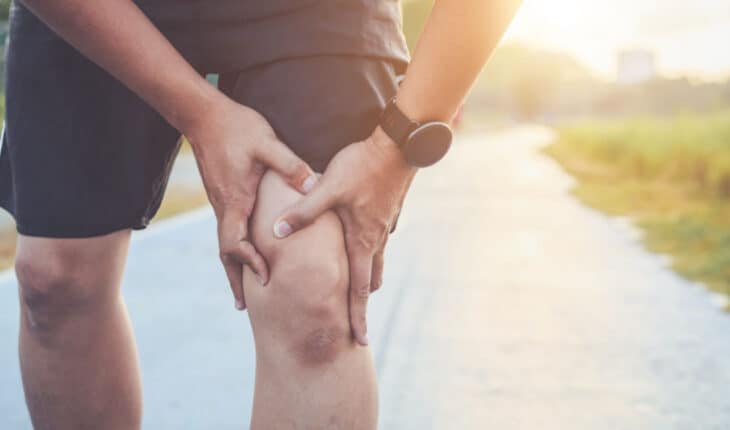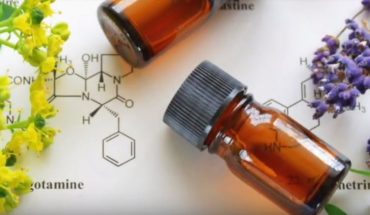Pain: the invisible affliction that brings misery to millions: Pain Awareness Month (September) helps to highlight the challenges faced by people living with both daily discomfort and acute injury – & calls for better understanding of new approaches to treatment
Everyone will experience pain at some point in their lives – and thankfully for the majority of people, it’s acute and fleeting. In time, pain will usually pass with the correct treatment and care and will be a temporary state for the patient. However, for many, chronic pain (described as pain or discomfort – either constantly or intermittently – lasting for more than three months) can become a constant feature, challenging every aspect of daily life.
Around 15.5 million people in England (34% of the population) are estimated to have chronic pain. Approximately 5.5 million people (12% of the population) have high-impact chronic pain and struggle to take part in daily activities, within around 10 million people (22% of the population) said to experience low-impact chronic pain.
“The causes are wide and varied, ranging from the impact of injury to hard-to-treat and diagnose autoimmune conditions such as fibromyalgia. Musculoskeletal conditions such as osteoarthritis (usually affecting the back, neck and knees) are said to be the commonest cause of chronic pain.
But here, as part of Pain Awareness Month 2022, leading Consultant Orthopaedic Surgeon, Mr Paul Jairaj, explores the pain suffered by sportsmen and women at both a grass roots and elite level and highlights how sudden and isolated injury can be managed effectively to prevent it from evolving into a chronic complaint:

Mr Jairaj explains; “Let’s start with the bare bones of the problem…one of the most common sites of injuries affecting sportspeople is the knee and the most important stage of managing knee injuries is correct and swift diagnosis.
“Seeing a specialist in the first instance can help be vital. An expert knowledge of the exact injury, its mechanism, examining the knee and performing further imaging investigations will help make a diagnosis. However, in the immediate aftermath of a knee injury, one should rest and ice the knee, potentially also protecting it with splinting or bracing to give the knee a chance to settle. Gentle physiotherapy and range of motion exercises will help the knee start to settle quite quickly.
“If immediate swelling has occurred within a few hours of the injury then one should definitely seek medical opinion. If not, and the knee recovers quickly it is less likely that significant injury has occurred.
Mr Jairaj continues; “Knee injuries and sustained pain have certainly been in the headlines this summer, due to high profile of England’s victorious ‘Lionesses! The conversation around knee injuries focused around key players, Chloe Kelly and Jordan Nobbs who had both sustained significant anterior cruciate ligament (ACL) injuries within the last year. Such injuries can potentially end a career at that high elite level if not managed correctly. Fortunately, England’s ladies football squad have great teams around them allowing them to return to top flight football in spite of their previous knee pain (and ensuring they could ‘bring home’ the Euro 2022 trophy!)
“But whilst ACL injury is a significant injury, meniscal tears (which is the shock absorbing cartilage) can also become damaged and the abnormal movement that then occurs within the knee can cause increased wear and tear which is a loss of articular cartilage.Essentially degenerative arthritic change.
“However, as we all know, elite athletes are not the only ones effected. Anyone playing acceleration/deceleration direction change sport can suffer from these injuries. There is a significantly higher incident of these injuries in people who enjoy playing soccer, basketball, netball and rugby.
“All of these sports are now being played in much higher numbers by woman. Interestingly, women seem to sustain these injuries at a much higher frequency rate than men.
So, what can people do to prevent knee problems?
“Correct technique is key. Risk factors for these injuries can be anatomical, environmental, hormonal and biomechanical therefore, prevention strategies are vitally important and these essentially revolve around neuromuscular factors so care must be taken to avoid significant deceleration with direction change, landings with a straight leg ensuring one compresses through the landing. Balance and plyometric exercises can definitely make a big difference in reducing the injury rate.
Are any new treatments available?
“In addition to the self-care methods I’ve already discussed (R.I.C.E; gentle physio and periodic use of non-steroidal, anti-inflammatory medications) there are also many new treatments for knee injury. There are short term treatments that can aid the knee in their recovery which could consist of multiple injectable agents e.g steroids to ‘calm the knee down’ and promote healing.
“However, an extremely promising and exciting new product which is now widely available in clinics across the UK especially for patients with significant damage to their knees caused by osteoarthritis (the ‘wear and tear’ and seen in keen sportspeople) is Arthrosamid®.
“Arthrosamid® a single injection hydrogel that can essentially cushion the knee and “spread the load”, providing long acting and sustained pain relief as well as improve mobility. But, excitingly, the treatment also has an effect on the lining of the joint which produces the inflammatory markers.
So, finally….can you return to sport / exercise after a knee injury?
“After a good period of rest, the correct diagnosis and a good rehabilitation programme there is no reason why one cannot return to sport.
“Certain injuries do not require any type of surgical intervention however, meniscal tears and ACL ruptures and articular cartilage injuries should be treated surgically especially, if patients are considering returning to direction-change type activities as these provide stability. If stability is lost, the wear stresses in the joint will increase and early onset arthritis will ensue.
“And, novel and non-invasive treatments, such as the innovative Arthrosamid®, are really helping to get people back on their feet and moving again and with this approach (combined with expert physio and maybe a subtle modification of technique) there’s absolutely no reason why patients cannot return to the same if not, an even higher level of sport.”
- 1 ¼ Million new mums miss out on free access to NHS dentistry - 23rd April 2024
- Breakthrough in child chronic respiratory diseases - 11th April 2024
- Protein could help detect delayed concussion recovery - 11th April 2024







The relationship between physical discomfort and the emotional toll it takes speaks volumes about the multidimensional nature of pain. Whether it’s a momentary ache or the relentless grip of chronic pain, its impact permeates every facet of life. Especially in the sporting realm, an injury is not just a physical setback but a mental challenge. With the advent of promising treatments, there’s a glimmer of hope. But what stands out is the need for a compassionate and comprehensive approach, understanding pain not just as a symptom but as an experience that shapes one’s life journey.